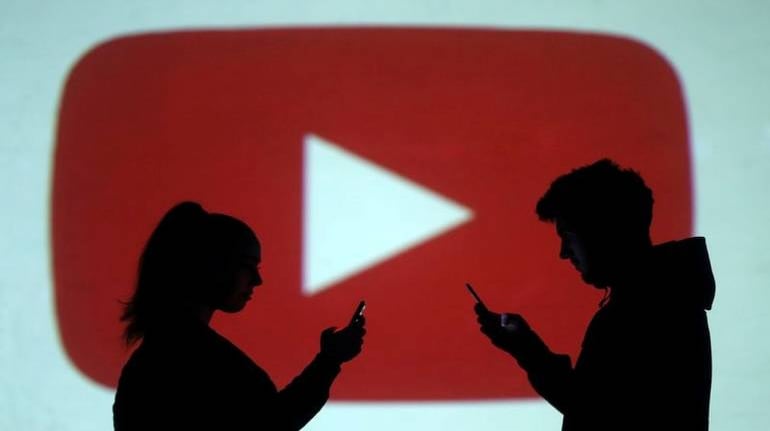



Google-owned YouTube plans to introduce generative AI tools for creators on its platform in the coming months, the company's new leader Neal Mohan said in a letter to YouTube community on March 1, becoming the latest service to capitalise on the new AI wave that has gripped technology giants and startups across the world.
"The power of AI is just beginning to emerge in ways that will reinvent video and make the seemingly impossible possible," Mohan said.
He explained that creators will be able to virtually swap outfits or create a "fantastical film setting" through these generative AI capabilities, thereby enhancing their storytelling and raising their production value. That said, he didn't disclose any specific details on what tools they will offer to creators.
Mohan also cautioned that these features will take some time since they want to develop these features with "thoughtful guardrails" and "protections to embrace this technology responsibly."
Generative AI refers to technology that can generate text, images, sounds and other media formats in response to short commands or prompts from users. OpenAI's ChatGPT and Dall-E are popular examples of Generative AI tools in recent months.
While Google has been a pioneer in developing AI technologies for several years, it is under pressure to productise them and integrate into their existing products in a quick fashion amid escalated competition from Big Tech rival Microsoft and AI upstart OpenAI's whose offerings are witnessing rising popularity amid consumers in recent months.
Microsoft recently introduced artificial intelligence capabilities in its search engine Bing and plans to add such capabilities across its range of software products in the future.
On February 27, Meta CEO Mark Zuckerberg said the social networking giant is unifying its generative AI efforts across the company into a new product group that will focus on integrating the technology into all of its products including Facebook, Instagram and WhatsApp.
Last month, Google unveiled its ChatGPT competitor called Bard that is expected to be available publicly in the coming weeks. The firm also previewed generative AI features in its search engine that can summarise information from the web.
Change of guardMohan's remarks come nearly a fortnight after taking over as the head of the Google-owned video sharing platform from Susan Wojcicki who stepped down after serving as YouTube CEO for nine years. She was among Google's earliest employees and has been with the parent company Alphabet for nearly 25 years.
"Creators and artists are the heart of YouTube, and I’ll continue to put them first", Mohan said, claiming that YouTube’s creative ecosystem supported more than two million jobs in 2021 in India, Brazil, Canada, the United States, Indonesia, Japan, South Korea, France, Australia, Germany, the United Kingdom, and Turkey combined, citing research by the consulting firm Oxford Economics.
In December 2022, YouTube stated that its creative ecosystem contributed over Rs 10,000 crore to the Indian GDP in 2021 and supported the equivalent of 7,50,000 full-time jobs in the country, citing an Oxford Economics report.
New Shorts and podcasting featuresLater this year, YouTube will roll out a new creation tool that will let creators record a short video in a side-by-side layout besides an existing short video or an existing long-form YouTube video, enabling creators to provide their reactions or their take on a trend. This appears to be similar to TikTok's duet feature or Instagram's Reels Remix feature.
"Shorts is now averaging over 50 billion daily views. And last year, the number of channels that uploaded to Shorts daily grew over 80%," he said.
Another area of focus is podcasting. YouTube will make it easier for creators and artists to showcase their podcasts, while new features in YouTube Studio will make it easier to publish podcasts.
YouTube Music will also start offering both audio and video-first podcasts to consumers in the United States, with plans to expand to other regions in the future. Later in 2023, creators will be able to upload their podcasts to YouTube via RSS feeds, enabling them to give their users more listening options.
"This is a critical moment in the creation of digital video, and we’re imagining what the future of creation will look like," Mohan said in the letter.
YouTube is also expanding its subscriptions business, investing in shopping and improving its paid digital goods offerings such as Super Chat, Super Stickers and channel memberships to help creators diversify their revenue streams beyond advertising, he said.
Mohan claims that more than six million viewers paid for channel memberships on YouTube in December 2022, registering over 20 percent increase from the prior year.
Other recent features that YouTube has recently added to its platform include the ability for creators to add language tracks to their videos and support for automatic captions in more languages.
Mohan said the ability to add language tracks was previously available for select creators and will now be expanded to thousands of more creators. They are also testing the feature in livestreams and Shorts.
"This is a pivotal moment for our industry. We face challenging economic headwinds and uncertain geopolitical conditions. Creators, viewers, and advertisers have more choices about where to spend their time than ever before and platforms like YouTube need to deliver across a range of formats while investing in the policies that protect platforms from real-world harm," Mohan said.
Discover the latest Business News, Sensex, and Nifty updates. Obtain Personal Finance insights, tax queries, and expert opinions on Moneycontrol or download the Moneycontrol App to stay updated!
Find the best of Al News in one place, specially curated for you every weekend.
Stay on top of the latest tech trends and biggest startup news.